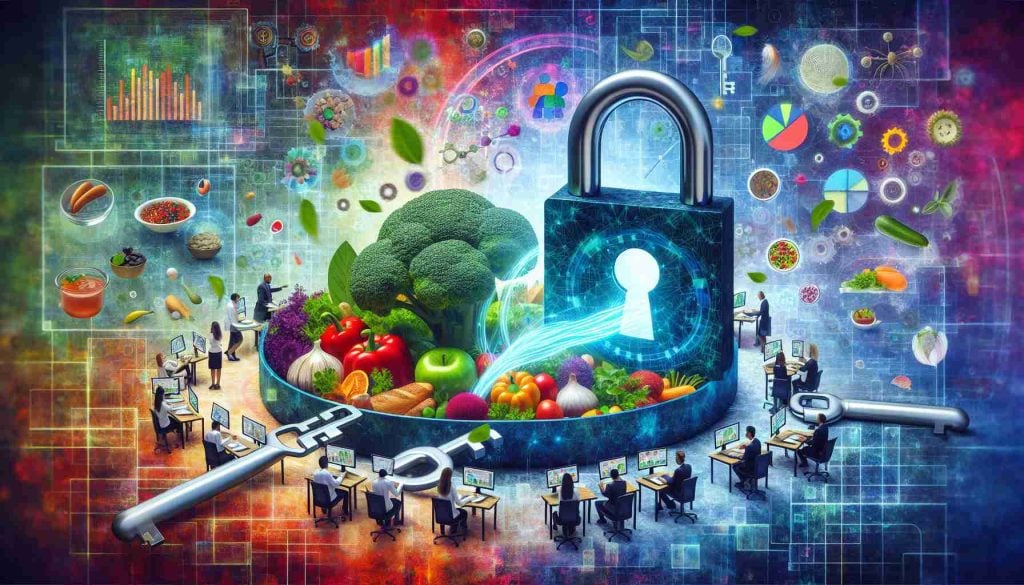- Food safety decisions can significantly impact public health.
- Innovative technologies are transforming food safety strategies through predictive analytics and real-time monitoring.
- Collaboration across diverse fields enhances risk assessments and decision-making accuracy.
- Industry 4.0 technologies, including automated systems and smart sensors, provide continuous data for rapid hazard identification.
- Skilled professionals are essential for interpreting data and ensuring effective safety measures.
- The focus on data, collaboration, and expertise is vital for a trustworthy food supply chain.
In the world of food safety, every decision can mean the difference between a safe meal and a health crisis. With innovative technologies and data-driven strategies, the food industry is stepping up its game to protect consumers and enhance public confidence.
Cognitive biases have historically plagued decision-making in food safety, often leading to missed risks and costly recalls. However, by embracing predictive analytics, professionals can now anticipate hazards before they escalate. Advanced algorithms analyze historical data in tandem with real-time monitoring, revealing trends that traditional methods overlook. This shift towards a proactive approach empowers teams to intervene before contamination occurs, safeguarding our plates.
Collaboration is also key. Modern digital tools allow experts from diverse fields to come together, challenging assumptions and refining data evaluations. Through real-time discussions and visual data organization, these platforms promote transparency, helping to eliminate personal biases that could skew risk assessments. The result? More accurate decisions and a stronger safety net for consumers.
The integration of Industry 4.0 technologies further enhances food safety. Automated systems and smart sensors capture vital data continuously, ensuring rapid identification of potential concerns. This continuous feedback loop minimizes human error and upholds strict safety standards.
As the food industry evolves, the need for skilled professionals to interpret data remains crucial. They are the ones who ensure that technology complements human expertise, translating numbers into actionable safety measures.
In summary, the future of food safety relies on harnessing the power of data, collaboration, and expert judgment. By focusing on these areas, we can create a safer food supply chain that consumers can trust.
Revolutionizing Food Safety: The Future is Here!
Innovative Technologies Transforming Food Safety
The food safety sector is experiencing a seismic shift as innovative technologies and data-driven strategies enhance consumer protection and public confidence. In addition to the predictive analytics mentioned, several other emerging trends are crucial to this transformation.
1. Blockchain Technology: Blockchain is gaining traction in food safety. It enables transparent tracking of food products from farm to table, ensuring that every step of the supply chain is traceable and secure. This transparency can effectively reduce fraud and enhance accountability among producers.
2. Artificial Intelligence (AI) in Quality Control: AI applications are being increasingly adopted for real-time monitoring of food quality. For instance, computer vision systems can detect packaging anomalies or signs of spoilage, helping to ensure that only safe products reach consumers.
3. IoT Devices: The Internet of Things (IoT) is playing a pivotal role in monitoring food safety. Sensors placed throughout supply chains can provide real-time data on temperature, humidity, and other conditions crucial for maintaining food safety.
4. Machine Learning Models: These models analyze vast datasets to predict potential food safety breaches before they happen, thus enabling companies to mitigate risks proactively rather than reactively.
Key Questions about Food Safety Innovations
1. What role does technology play in preventing foodborne illnesses?
Advancements such as AI, IoT, and blockchain aid in monitoring food throughout the supply chain, thus identifying and rectifying contamination risks before they result in foodborne illnesses.
2. How can data analytics improve food safety compliance?
Data analytics provides food companies with detailed insights into compliance levels at various stages of production. By analyzing trends and patterns, companies can identify weak points in their procedures and strengthen their processes accordingly.
3. What are the biggest challenges facing the integration of new technologies in food safety?
Challenges include the high cost of technology implementation, data privacy concerns, the need for employee training, and ensuring technology does not eclipse the importance of human expertise in risk assessment and management.
Related Insights and Trends
– Market Forecasts: The global food safety testing market is expected to reach over $21 billion by 2026, indicating the increasing importance of food safety measures.
– Sustainability: Sustainable practices are increasingly integrated into food safety protocols, as consumers demand safer and environmentally friendly products.
– Consumer Awareness: Rising consumer awareness regarding food safety issues is pushing companies to adopt more stringent safety measures, causing a ripple effect across the industry.
To stay updated on the latest trends and news concerning food safety, check out Food Safety News.
